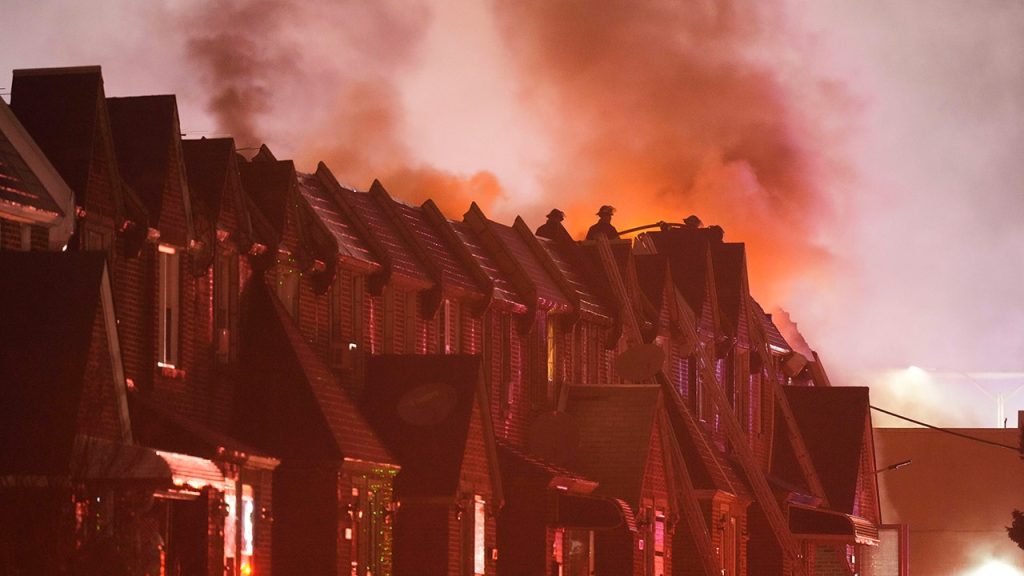The Final Moments: A Reconstruction of the Learjet 55 Crash
The chilling audio recording from the Northeast Philadelphia Airport control tower paints a stark picture of the confusion and helplessness in the moments following the Learjet 55 crash on Friday night. Controllers’ voices, laced with rising concern, reveal the desperate attempts to re-establish contact with the aircraft as it vanished from radar. The initial uncertainty – “What’s going on down there?” – quickly transforms into grim realization: “We have a lost aircraft…We’re not exactly sure what happened.” The immediate closure of the airfield, halting all incoming and outgoing flights, underscores the severity of the incident. This tragic event unfolded merely 48 hours after the devastating mid-air collision near Reagan National Airport, further intensifying the scrutiny on aviation safety protocols and procedures.
The Ill-Fated Flight: Passengers, Purpose, and Destination
The Learjet 55, operated by Jet Rescue Air Ambulance, was embarking on a journey from Philadelphia to Springfield-Branson National Airport in Missouri. Onboard were six individuals: the pilot, co-pilot, a physician, a paramedic, a young pediatric patient, and her mother. All six were Mexican nationals. The young patient, having completed life-saving medical treatment in the U.S., was returning home with her mother. This detail adds a poignant layer of tragedy to the crash, transforming what should have been a journey of hope and recovery into a devastating loss. The ambulance company’s confirmation of the passengers’ identities and the purpose of the flight fills in crucial details, allowing a clearer understanding of the human cost of this accident.
Expert Analysis: Unveiling Potential Causes of the Crash
John Anderson, a retired pilot with extensive aviation experience, offered his insights based on the available video footage of the crash and the aircraft’s impact trajectory. He suggests a takeoff stall as the likely cause, emphasizing that the plane appeared to be beyond the crew’s control. Anderson dismisses the possibility of controlled flight into terrain (CFIT), pointing instead to a potential mechanical malfunction affecting critical components like the stabilizer, elevator, or trim. He also raises the possibility of a load shift within the cabin, perhaps involving the improperly secured medical stretcher carrying the young patient. Such a shift could have caused the nose of the plane to lift, ultimately leading to a stall.
Delving Deeper into the Stall Theory: Exploring Contributing Factors
Expanding on the stall theory, Anderson explains how a rearward shift of the stretcher could disrupt the aircraft’s center of gravity, forcing the nose upward and stalling the wing. The subsequent nosedive, as captured in the video, would be consistent with this scenario. He further elaborates on potential contributing factors, including a runaway trim or a malfunctioning stabilizer, both of which could compromise the aircraft’s ability to maintain stable flight. His analysis provides a framework for investigators to explore as they seek to pinpoint the precise sequence of events leading to the crash.
The Aftermath: Investigations and the Search for Answers
In the wake of this tragedy, investigations are underway to determine the exact cause of the crash. The National Transportation Safety Board (NTSB) will meticulously examine the wreckage, analyze the flight data recorder and cockpit voice recorder (if recovered), and interview witnesses, including air traffic controllers and ground personnel. The audio recordings from the control tower, coupled with the video footage and expert analysis, provide crucial starting points for the investigation. The information gleaned from these sources will be crucial in reconstructing the final moments of the flight and understanding the factors that contributed to the tragic outcome.
Broader Implications: Air Safety under Scrutiny
The Learjet crash, occurring so soon after the mid-air collision near Reagan National Airport, raises broader concerns about air safety and the effectiveness of current regulations and procedures. These incidents, while distinct in their nature, underscore the inherent risks associated with air travel and the importance of continuous vigilance in maintaining safety standards. The investigations into both crashes will undoubtedly lead to renewed scrutiny of pilot training, aircraft maintenance protocols, and air traffic control procedures. The lessons learned from these tragedies will be vital in preventing similar incidents in the future.

